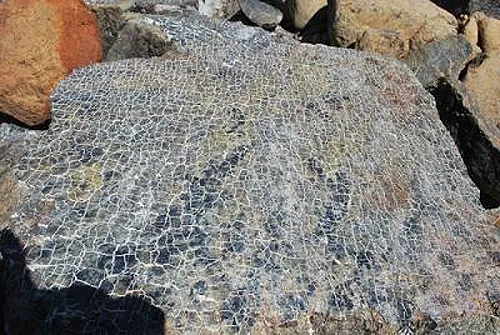News•December 29, 2013
New Discovery Brings Hydrogen Fuel a Little Closer
By Tim Radford, Climate News Network
LONDON – French scientists have discovered a swift and easy way to make hydrogen, the raw material of a whole universe and a clean source of energy for fuel cell transport.
Hydrogen powers a London bus. The French team’s discovery holds out hope that the production will be scaled up.
Credit: Felix O, Wikimedia Commons via Climate News Network

The catch is that it may be a few decades before the process can be turned into industrial-scale production. The bonus is that the discovery may be the key to a deeper understanding of planetary processes and the origin of life.
Hydrogen would be a valuable fuel for a post-carbon world. It is lightweight, fiercely reactive, and burns with oxygen to make water, so it would solve the greenhouse gas emissions problem, and there would be no other air pollution either.
Hydrogen is the power source for 100 billion stars in the Milky Way galaxy, and it is a food and energy resource for microbial communities that dwell miles below the Earth’s surface. But in energy terms, it is expensive to make in a laboratory or a factory.
Three researchers from the Université Claude Bernard Lyon 1 in France told the American Geophysical Union at its recent meeting in San Francisco that they think they have solved the puzzle.
They put aluminum oxide, water and olivine, one of the planet’s most common minerals, in a high-pressure vessel known as a diamond anvil cell.
They turned up the heat – to somewhere between 200°C and 300°C – and the pressure to match those far below the deepest ocean floor, and waited. They had expected to wait months. The mixture delivered hydrogen within 24 hours.
Accelerated by Aluminum
What happens deep in the Earth’s crust is already known. Water touches olivine under the fierce pressures deep beneath the sea floor and the rock reacts with oxygen in the water to transform itself into another mineral called serpentine. The waste product is hydrogen.
Beneath the Earth’s crust water touches olivine under the fierce pressures deep beneath the sea floor and the rock reacts with oxygen in the water to transform itself into another mineral called serpentine. The waste product is hydrogen.
Credit: Matt Schrenk, Michigan State University

Microbial communities deep in the crust – their existence has been confirmed only in the last two decades – have been devouring the hydrogen in order to multiply and colonize the deep Earth, and these creatures may even have been among the first life forms on Earth.
But in the natural world, hydrogen generation happens slowly. Muriel Andreani and her colleagues have already described their new, high-speed process in the journal American Mineralogist.
The secret seems to have been that they employed aluminum as a catalyst to accelerate the process perhaps 50-fold. Aluminum is about the fifth most common mineral in the Earth’s crust. The problem for the moment is that a diamond anvil cell is a very small vessel.
The technique can – and does – provide important information about geochemistry at levels far deeper than any mineshaft. But it could hardly make enough hydrogen to drive even a toy car.
“Aluminum’s ability to catalyze hydrogen production at a much lower temperature could make an enormous difference. The cost and risk of the process would drop a lot”, says Jesse Ausubel, one of the founders of the Deep Carbon Observatory program, which has been exploring processes in the Earth’s crust.
“Scaling this up to meet global carbon energy needs in a carbon-free way would probably require 50 years. But a growing market for hydrogen in fuel cells could help the process into the market.”
Tim Radford is a reporter for Climate News Network.Climate News Network is a news service led by four veteran British environmental reporters and broadcasters. It delivers news and commentary about climate change for free to media outlets worldwide.
